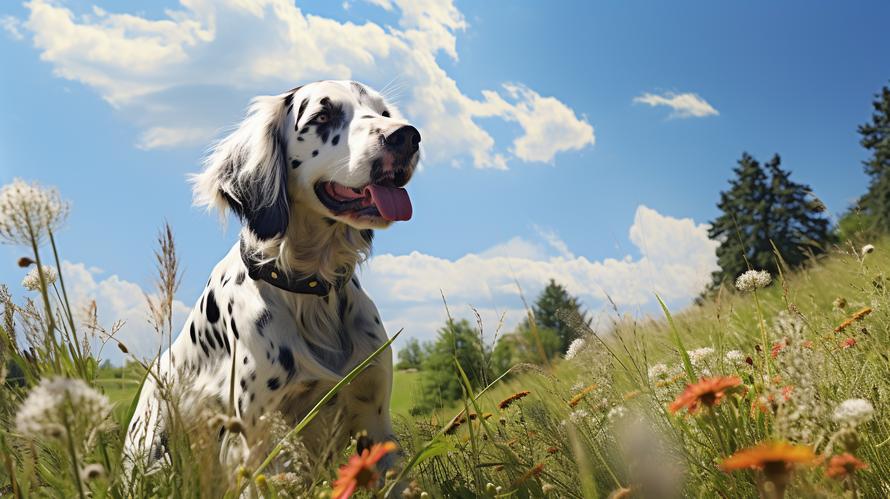Who would have thought you could train a dog to bird-watch on your behalf? Yet, this is exactly what English Setters have been bred to do for over 400 years. As fantastic as that sounds, English Setters are not just about bird-watching, they are exceptionally versatile, noted for their astute intelligence, sociable nature, and majestic stature. Given that this breed comes with its own unique set of dynamics, one may start to wonder how easy they are to train? Well, let’s flip the pages of time back to where it all started and embark on this enlightening journey together.
The history of English Setters is a testament to their trainability. Originating in England during the Renaissance, the breed was developed by hunters who needed a dog capable of finding birds, pointing to them, and then remaining in position without startling the feathered game, until the hunters arrived. Such a complex role required more than just the dog’s natural instincts. It required a breed that could be easily trained. In essence, you can think of English Setters as the prodigy of the canine world.
Their ease of training, however, does not mean it is a walk in the park. As many dog trainers would concur, the key lies in understanding the breed’s distinctive characteristics and adapting your training techniques accordingly.
English setters are sweet-natured canines, spirited, highly-energetic, and notably adept at problem-solving. This desire for physical and mental engagement implies that they respond well to training techniques that incorporate stimulating activities. While this high energy might seem intimidating at first, one should think of it as that extra oomph that you need for a successful training regime. Their robust energy levels are pure gold when channelled the right way.
While their energy can be an advantage, it could also morph into a challenge if their routines lack regular physical activity and mental stimulation. This wonderfully tenacious breed can easily get bored and when that happens, your loafers might just turn into their new chew toy. So, take note; always make sure they are adequately engaged.
Moreover, English Setters are highly sociable. These dogs are pack animals and they love to be part of the family activities. Embrace their sense of belonging and you’ve got another secret ingredient for effective training. They’re inclined to respond well to training that involves group activities or routines that let them feel like they are part of the family.
Their sociability also suggests they respond better to positive reinforcement methods of training. They love to please their humans. Their warm personality means they may not react well to harsh training techniques. Yelling at your English Setter or reprimanding them harshly might lead to them becoming anxious or depressed. Instead, opt for rewards-based training where treats and praises are used to reinforce good behavior. Like the old adage, you attract more bees with honey – or in this case, more tail wags.
Aside from this, it’s also important to start any training as early as possible. Those sensorimotor and socialization stages are very crucial. The sooner you can introduce your Setter to a range of smells, sounds, sights, and experiences, the better they’ll adapt to different situations as they grow.
In essence, training an English Setter might come with its challenges, but, with an understanding of their nature, patience, consistency, and lots of love, positivity, and rewards, training them becomes not just easy, but also an avenue to strengthen the bond between you and your furry friend.
In the end, whether it’s mastering commands, impermeable leash manners, acing agility courses, or simply achieving faultless household conduct, remember that every English Setter is unique. Their ability to be trained, just like other breeds, will depend on their experiences, their upbringing and most importantly, their tutor.
However, witnessing your English Setter grow, learn, and achieve milestones because of your consistent and patient training, will without a doubt, make the entire process one worthwhile journey. Undeniably, these canine companions are not just there to add to the numbers in our homes, but to provide an enriching experience that leaves us, the proud guardians, more knowledgeable, patient, loving, and better for it – the true essence of companionship.



